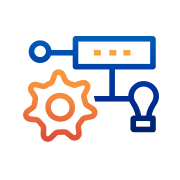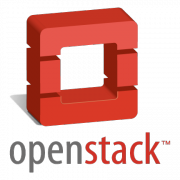As a systems integrator and solution provider, we offer services that cover the full life cycle of information systems: requirements, analysis, design, development, testing, implementation, and subsequent maintenance and evolution, always with the aim of achieving greater efficiency and productivity.
Within the framework of development and integration of Information Systems, Graviton Solutions encompasses different types:
- Business Applications. “Turnkey” Projects that cover the functionalities and the operational business processes in our clients.
- Migration or Conversion of Applications. Projects of technological evolution of applications that do not require substantial functional or operational reforms.
- Systems Integration or Applications. Integration projects between different solutions, Applications, Products that cover specific areas of process on the client.
This allows you to achieve the following objectives:
- Provide or define projects or services that will assist them to achieve the purposes of the Organization through the definition of a strategic framework for its development.
- Improve the productivity of the projects or services, allowing greater ability to adapt to the changes and taking into account the reuse as much as possible.
- Facilitate communication and understanding among the various participants in the production of software throughout the life cycle of the project, bearing in mind their role and responsibility, as well as the needs of each and every one of them.
- To facilitate the operation, maintenance and use of the software products obtained.
In the development of the methodology for the development and maintenance of Graviton Solutions, account has been taken of the most popular development methods, as well as the latest standards of software engineering and quality, in addition to specific references in regard to security and management of projects.
We also provide consulting services in the area of below cutting-edge technologies:
- IOT Development
- Artificial Intelligence (Supervised Learning/Un-supervised Learning) – Text Mining with Python’s NLTK
We use supervised learning as a technique to infer a function from training data. The training data consist of pairs of objects (typically vectors): a component of the pair is the input data and the other, the desired results. The output of the function can be a numeric value (as in the regression problems) or a label of class (as in the classification). The goal of supervised learning is to create a function capable of predicting the value corresponding to any valid input object after having seen a number of examples, the training data. To do this, you need to generalize on the basis of the data submitted to situations not seen previously.
Unsupervised Learning
At Graviton Solutions, we use the unsupervised learning as a method of Automatic process where a model is adjusted to the observations. It is distinguished from supervised learning, by the fact that there is no prior knowledge. In the unsupervised learning, a data set of input objects is treated. As well, the unsupervised learning typically treats the input objects as a set of random variables, being built in a density model for the data set.
The unsupervised learning algorithms that we implemented at Graviton Solutions are of two types:
- Hebbian learning
- Competitive and Cooperative Learning
Real-time Network Topology and Configuration Change
At Graviton Solutions, we propose to have a graphical representation of network traffic using Graph Database. In this way, the analysis of the traffic in real time can be easily attained. It has a representation of the main screen network traffic by means of elements that indicate hosts, groups of hosts, links between them (according to established connections). Represents, also, the architecture of the network topology or analyzed. All hosts that are within the circle with dashed line are part of the local network, the rest, is considered to be outside of this. One of the information’s that provides is the bandwidth.
Service Orchestration
Service Assurance, Open loop and Closed Loop Automation
At Graviton Solutions, we design systems of open loop control, which operate without the feedback cycle, without measuring the output variable, so that there is no comparison between the real value of the output and the desired value in the input parameter.
At Graviton Solutions, we design systems of control of closed cycle in which the output variable is compared with an input parameter, and any difference between the two is used to ensure that the output is in line with the entry.
Security Services
Any organization large or small needs Services of Computer Security, usually large organizations are those who fall into account first of that need, but at the end all require the services of Computer Security to ensure the integrity and privacy of your data.
With the unstoppable growth of information systems, companies even if they are small and local have been open to the world, and are increasingly vulnerable; your data have become one of the goods most desired by the criminals so protecting them is of vital importance.
That is why in Graviton Solutions we offer security services for large and small businesses that want to stay one step ahead of offenders and ensure that information systems are secure.
Supply Chain
As one of the leading consultancies that deal in supply chain management consulting, Graviton helps enterprises transform their supply chains for improved alignment with their core business strategy. While other supply chain consulting companies often simply recommend “high-level” supply chain strategies, Graviton helps you drive implementation and make them operational for creating real-world success stories. Our team of supply chain management leaders are skilled to carry out a comprehensive assessment of your entire supply chain and develop reliable supply chain strategies that are capable of quickly adapting to the ever-changing business needs.
BIG DATA
Our consultants are quite ahead of the modern technologies and they can help you in creating focused content and attractive websites which ensures proper marketing. The experts can help in creating a responsive websites, which would increase your business marketing.
WEB & MOBILE DEVELOPMENT
Our consultants are quite ahead of the modern technologies and they can help you in creating focused content and attractive websites which ensures proper marketing. The experts can help in creating a responsive websites, which would increase your business marketing.

Natural Language toolkit (NLTK) with Python
Given the intrinsic complexity that accompanies any process of NLP, many of the automated techniques that we use at Graviton Solutions are related to the use of AI (Artificial Intelligence) and the cognitive sciences. To apply the most common techniques in NLP, the NLTK library (Natural Language Tool Kit) allows any program written in Python language can invoke a broad set of algorithms that highlight the main techniques of NLP for the future generation, frequency of terms, positive or negative polarity of phrases and texts, among many other techniques.
Many companies hire us for developments in Python language. One of the specialties of Python is its flexibility. At Graviton Solutions, we are able to create both desktop applications such as web applications and everything under the same environment.
Graviton Solutions extend their brain trust in providing consulting services in SDN/NFV, Inventory Management, Cloud Computing, Security Solutions and Mobile/Web Development.
Network Inventory Management and Design
Network Inventory Management stores detailed information about network resources and presents the current state, historical, and future of their networks of telecommunication/ICT.
At Graviton Solutions on the Network Inventory Management for telecommunications companies facilitates the management of network resources for multi-vendor networks and multi-domain. In addition, supports RAN, copper, fiber and access networks based on cable.
The architecture of the Network Inventory Management is prepared for the future, since it allows an easy integration with the innovative environments of NFV/SDN and plays an important role as manager of the topology.
The integrated module Network Auto-discovery and Reconciliation stored information is updated with changes in the network. This automatic discovery tool allows you to add new network elements to the inventory database, delete the existing network elements from the databases of the inventory and, in addition, updates the inventory database with the change of phone, ports or interfaces.

SDN/NFV
At Graviton Solutions, we offer SDN and NFV consulting services. Two technologies that change the perspective of the networks, based on the software, to adapt them to the new technological needs.
SDN (software-defined networking) is born from the experimentation. It is characterized by separating the control layer of the data, allowing a centralized control, and by offering you the ability to schedule and automate the behavior of the network. In this way you get to optimize the use of network resources, increase their agility and flexibility, and allow for innovation and dynamism of the networks, in addition to reducing capital and operational expenses.
For its part, NFV (virtualization of network functions) arises from the initiative of some network service providers such as: AT&T, BT, China Mobile, Deutsche Telekom, among others. This allows you to deploy network functions through software instead of hardware. Unlike the network virtualization that virtualizes the entire network, NFV virtualizes only their functions on servers, switches and storage devices.
NFV reduces dependence on hardware devices, increasing scalability and customization of the network so that, it is easier to improve it. To avoid the hardware, you get reduce both the space that it occupies as its energy consumption, in addition to reducing the maintenance costs of the network and its hardware.
Both SDN and NFV technologies are still embryonic stem cells, but represent the beginning of a new trend in networking, whose objective is, mainly, to adapt the architecture of networks to the new technological requirements and the new needs arising from the constant technological evolution, simplifying the management of the networks. Still in its infancy, yes, but we must not lose sight of the fact. At Graviton Solutions, we offer are: easy to use for you and your company.

OpenStack/Open Daylight
At Graviton Solutions, we offer deployment tools within the cloud computing. The first is OpenStack where the implementation, deployment, and management of networks is complex, it is the integration with the Open Daylight controller as a solution to the problem in the data center cloud, in many parts the last technology works yet, but this is obsolete for many reasons such as the rigidity of the networks, the high cost of operating systems, network servers hosted on high-priced machines, hardware from multiple manufacturers where different protocols that are implemented in turn become a problem; as part of the solution to these and many more problems there is a tendency for greater flexibility and scheduling systems where a series of milestones that we Displays the path to follow, in this are the initiatives of the Free and Open Source Software, develop programming languages which can be implemented in different systems without the need of overwriting, the Cloud Computing and application hosting, networking and data remotely where there is concern for their availability and storage virtualization, in which you can deploy multiple and different servers on a single piece of hardware by taking advantage of all available physical resources, networks are relaxed looking to increase their management with applications that allow its programming and control of centrally, eliminating errors and reducing time in your configuration. In Graviton Solutions, we seek to show how you can create a basic environment of OpenStack and then be integrated with the controller ODL to allow greater flexibility, scaling and the management of the networks in a programmable.
At Graviton Solutions, we also offer NFV on-boarding, migration, and assurance.

Mobile and Cloud Computing
As companies are encouraged to adopt this new paradigm, not only technological but collaboration of Cloud Computing Technology.
This Means a great challenge of cultural change for companies, and adoption of best practices in its operational processes and security.
At Graviton Solutions, we live up to the requirements also, building applications that demonstrate that cultural change benefits companies in financial terms but also substantially improving its processes. And on the whole, make an ecosystem that, applied to the logistics, optimizes and makes it more sustainable, extending the impact to the end consumers and the environment.
Cloud migration, sizing and migration of existing infrastructure to Cloud.
If you are not able to deliver applications to their customers and work force in the right way, your company will lose competitiveness. To succeed, you must migrate your applications to the cloud. There is a great growth in the migration of third-party applications, but what about the critical internal legacy applications for the business?
At Graviton Solutions, we can help you to rapidly migrate their applications to a platform in the open cloud: providing the right mix of speed, scalability, and security. This can make applications more accessible and quick to update, improve performance by up to 8 times reduce costs by up to 30 %.
Migrate applications to the cloud with confidence
Stay competitive by providing applications to their customers and workforce more quickly and efficiently with the right mix of services in the cloud. To enhance the performance and lower TCO by leveraging basic cloud capabilities to enhance their traditional applications. Graviton Solutions helps you to migrate your applications to the cloud with 100% security.
Graviton Solutions also offer informal learning.
Cloud Infrastructure
Enabling cloud adoption across an entire enterprise can be a serious undertaking. But when you have our team of experts on your side to help you launch successful initiatives on the cloud, so you can realize the benefits of this evolving technology to grow further and stay competitive in the market. With the increasing adoption and growth in the field of cloud computing and virtualization, Graviton Solutions is well aligned with the latest market trends as well as demands. We offer the right kind of technology, systems, and processes clients need to boost the performance of their infrastructure, achieve cost savings and efficiencies. We offer our clients cloud computing and managed security services with 100% focus on delivering the expected results.
ERP & EAI
Graviton Solutions can help clients guide in implementation and support of SAP Implementation. Graviton Solutions ERP implementation tools and expertise helps clients implement their SAP software faster and at a lower cost than industry averages. Graviton Solutions has the industry reach to effectively and efficiently staff your SAP project with SAP-certified functional experts.
Elements of an SAP Implementation
- SAP implementation project planning
- System design and business blueprint
- SAP implementation project management and program management
- Business process redesign and definition
- Gap analysis between industry pre-configurations and client business requirements
- Organizational change management and employee communications
- SAP training for end-users
- Form and report definition
- Data migration strategy and mapping
- Technical infrastructure upgrades
- Business process and systems integration
ERP Areas of Expertise
- Finance & Controlling
- Leasing – SAP LE
- SAP REFX – Flexible Real estate
- Sales & Distribution
- Material Management
Warehouse Management and Enterprise Warehouse Management (WM/EWM) - Project Systems
- SAP BW/BI/HANA
- SAP PI/SEEBURGER EDI
